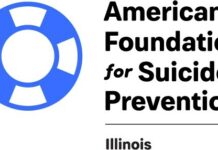SILVER SPRING, Md., Jan. 11, 2022 /PRNewswire-HISPANIC PR WIRE/ — This winter season, you may face extreme weather conditions and power outages. A power outage can happen at any time, so it’s important to have a plan in place to safely store your food during an emergency. Continue reading to learn the best way to keep your food safe.

Be Prepared and Plan Ahead
- Use a refrigerator and freezer thermometer, and check it regularly to ensure that the refrigerator temperature is at or below 40°F and the freezer is at or below 0°F.
- Plan for ice. Know where you can get dry or block ice. Make ice cubes and freeze containers of water or gel packs to help keep food cold when there is a loss of power.
- Keep coolers on hand to store refrigerated food if the power will be out for more than 4 hours.
- Freeze refrigerated items that you may not need immediately, and group foods close together in the freezer.
- Stock your pantry with a few days’ worth of ready-to-eat foods that do not require cooking or refrigeration.
If the Power Goes Out
Cold temperatures slow the growth of harmful bacteria. Keeping food at safe temperatures is key to reduce the risk of foodborne illnesses (also known as food poisoning).
- Keep refrigerator and freezer doors closed as much as possible. The refrigerator will keep food cold for about 4 hours, and a full freezer will keep the temperature for approximately 48 hours (24 hours if half full) if the doors remain closed.
- Use ice (dry or block ice, or ice cubes) and frozen containers of water or gel packs to keep your refrigerator and freezer as cold as possible.
When Power is Restored
Before eating any food after a power outage, check the temperatures inside your refrigerator and freezer.
- If the power was out for no more than 4 hours, refrigerated food should be safe as long as the doors were kept closed. When the power comes back on, check the temperature in the refrigerator or of the food. Perishable foods (such as meat, poultry, seafood, milk, eggs, or leftovers) with temperatures that are 45°F or below (measured with a food thermometer) should be safe but cook and consume them as soon as possible. Discard any perishable food that has been at temperatures above 40°F for 4 hours or more.
- If the freezer thermometer reads 40°F or below, food is safe and may be refrozen. If you did not have a thermometer in the freezer, check each package to determine its safety; you can’t rely on appearance or odor. If the food still contains ice crystals or is 40°F or below, it is safe to refreeze or cook.
- Be aware that perishable foods that are not kept adequately refrigerated or frozen may cause food poisoning if eaten, even after they are thoroughly cooked.
Learn more about keeping your food safe during a power outage:
- https://www.fda.gov/food/buy-store-serve-safe-food/food-and-water-safety-during-power-outages-and-floods
- https://www.fda.gov/food/buy-store-serve-safe-food/food-and-water-safety-during-power-outages-and-floods#video
Contact: Media: 1-301-796-4540 Consumers: 1-888-SAFEFOOD (toll free)
Logo – https://mma.prnewswire.com/media/585467/ucm519149_Logo.jpg
SOURCE U.S. Food and Drug Administration







